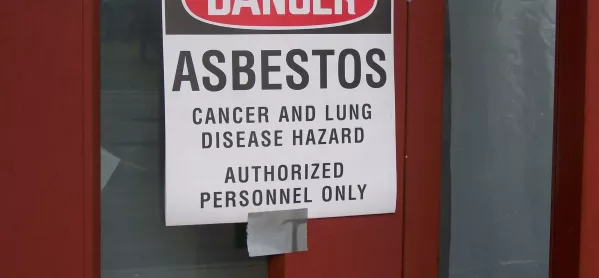Cash must be made available in tomorrow’s Budget to remove asbestos from “crumbling” school buildings, unions are urging.
The health of teachers and pupils is being put at risk by exposure to the potentially hazardous building material, according to teaching unions that make up the Joint Union Asbestos Committee (JUAC).
The unions say any attempt by the chancellor to reduce or freeze capital funding for schools would be “irresponsible”.
The warning comes as school capital funding has fallen by 40 per cent in real terms between 2010-11 and 2019-20, according to the Institute for Fiscal Studies.
And government figures released last autumn showed the capital budget would be slashed by 10 per cent next year, from £5 billion in 2019-20 to £4.5 billion in 2020-21.
Around four-fifths of school buildings in England contain asbestos, according to the Department for Health’s own estimate.
John McClean, chair of JUAC, said: “Any real-terms decrease in capital funding for schools in this Budget will raise the risk from asbestos for children and staff.”
Related: Revealed: More than 50 asbestos exposure incidents in academies
News: ‘Name and shame schools that fail to give asbestos information’
Funding: Lack of government asbestos funding branded ‘appalling’
Mr McClean continued: ”School budgets are already at breaking point after more than a decade’s funding freeze, and many school buildings are literally crumbling as repairs become unaffordable.
“This means asbestos could become more accessible in classrooms or be accidentally disturbed.
“To continue to put the school estate under such pressure by reducing or freezing capital funding again would be irresponsible.
“We urge the chancellor to make the health of everyone in schools a priority and to provide adequate capital funding to safely tackle asbestos in his budget tomorrow.”
The JUAC has also highlighted the National Audit Office calculation, from 2017, that it would cost £6.7 billion to return all schools in England to “satisfactory or better condition”, and a further £7.1 billion to bring parts of school buildings from “satisfactory to good condition”.
“These costs will only have increased since then - and they do not account for the cost of managing or removing asbestos,” said a JUAC spokesperson.
They added: “Educational buildings are unlike other workplaces because the majority of their occupants are children who are known to be more vulnerable to asbestos exposure.
“Given the very real risk to children and staff in schools with asbestos, significant and urgent government investment is needed to fund its phased removal from all school buildings, starting with the most dangerous first. This is the only way to ensure the safety of school staff and most importantly pupils.”
The JUAC is made up of the following unions: ASCL, GMB, NAHT, NASUWT, NEU, Unison, Unite the Union, UCU, and the
A DfE spokesperson said: ”We have invested £23bn since 2016-17 to deliver new school places, rebuild or refurbish buildings in the worst condition and deliver thousands of condition projects across the school estate, including removing asbestos when it is the safest course of action to do so.
“We have taken significant steps in recent years to strengthen schools’ approach to managing asbestos, including publishing refreshed guidance for schools in 2017 and launching the Asbestos Management Assurance Process in March 2018 to understand how well asbestos is managed in schools. The assurance process found that there are no systemic failures in the management of asbestos across the state-funded school estate.”
The Treasury have also been contacted for comment.




